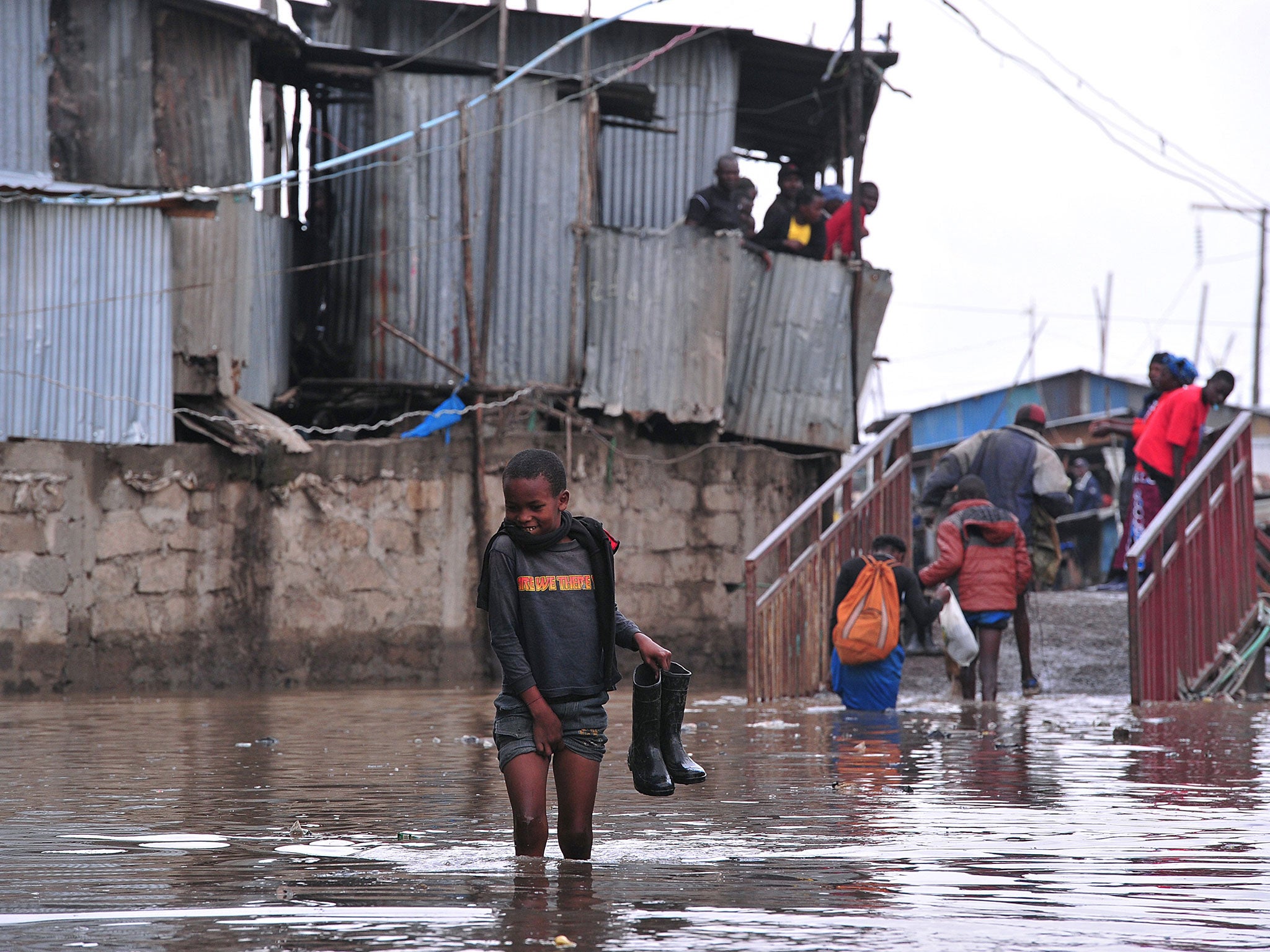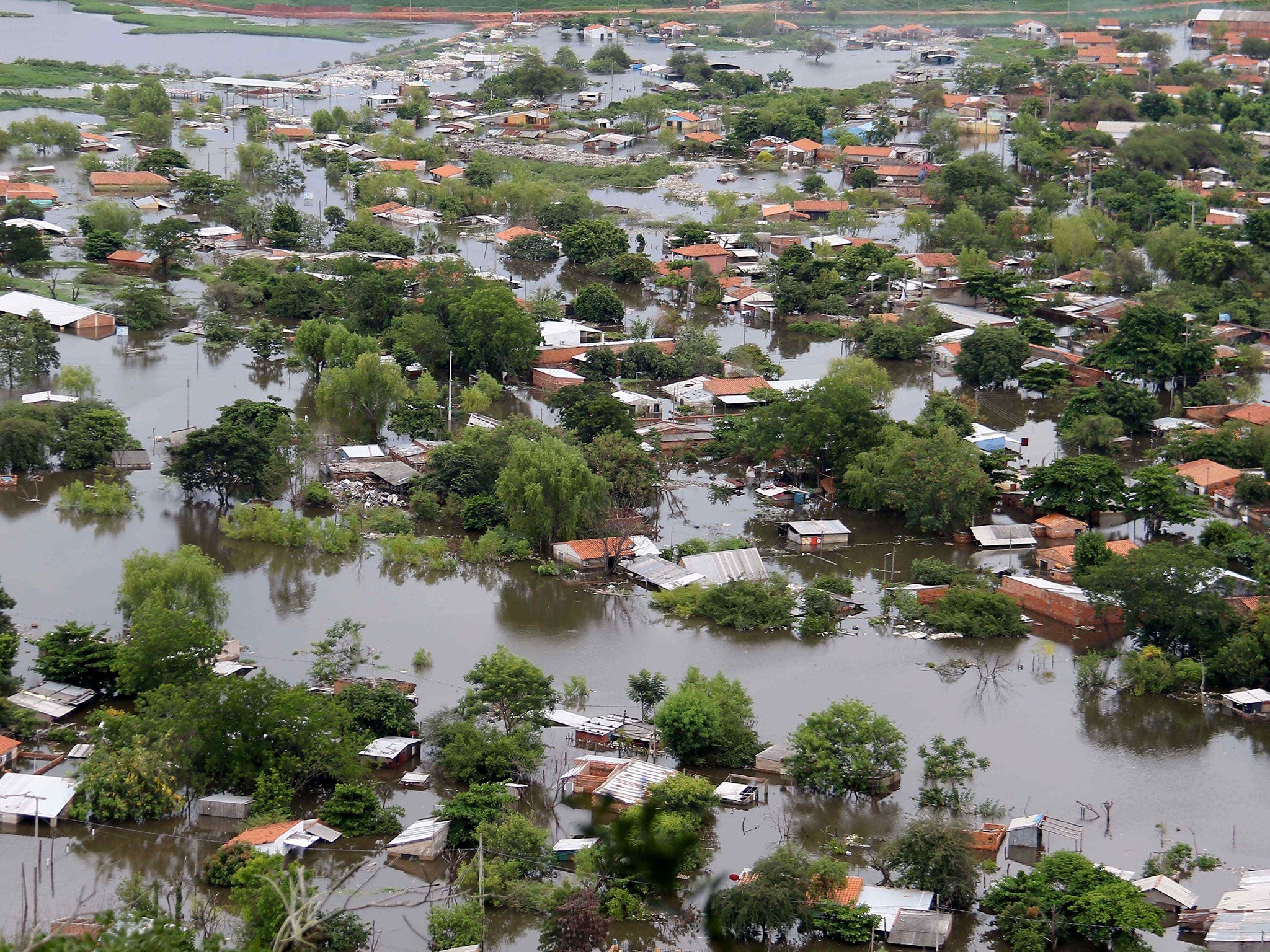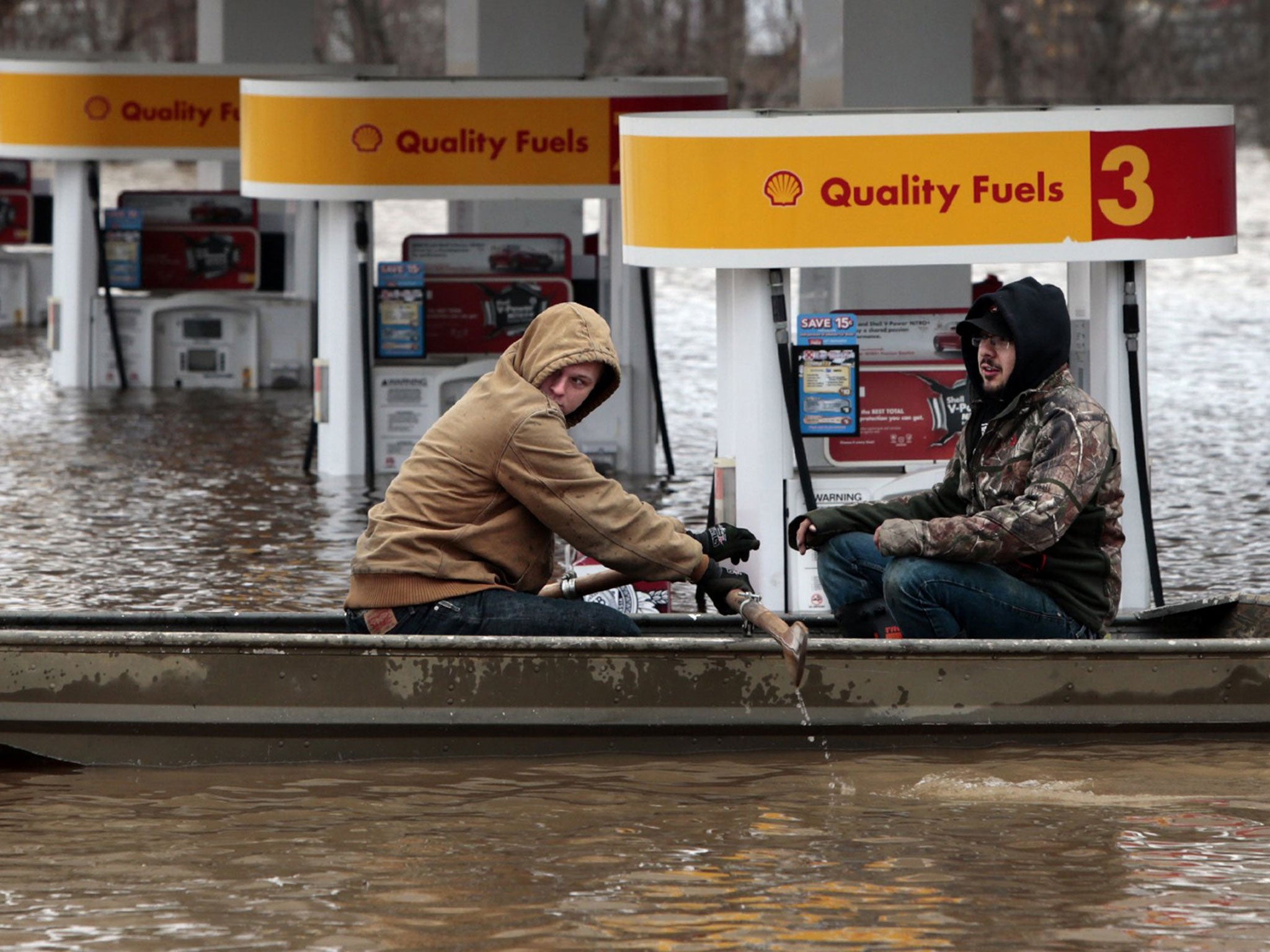El Niño: How the phenomenon has brought floods and fear back to Africa
For Kenyans, Nasa's warning that the current El Niño could be as bad as that of 1998 brings back painful memories

Your support helps us to tell the story
From reproductive rights to climate change to Big Tech, The Independent is on the ground when the story is developing. Whether it's investigating the financials of Elon Musk's pro-Trump PAC or producing our latest documentary, 'The A Word', which shines a light on the American women fighting for reproductive rights, we know how important it is to parse out the facts from the messaging.
At such a critical moment in US history, we need reporters on the ground. Your donation allows us to keep sending journalists to speak to both sides of the story.
The Independent is trusted by Americans across the entire political spectrum. And unlike many other quality news outlets, we choose not to lock Americans out of our reporting and analysis with paywalls. We believe quality journalism should be available to everyone, paid for by those who can afford it.
Your support makes all the difference.On the steep slopes of Kenya’s Kerio valley, El Niño is still discussed with reverence and fear. When it hit in 1998, days of rain sent the land sliding, carrying homes, crops, livestock and people with it. People groped through the darkness to flat ground, as trees cracked and fell. “It sounded like a bomb,” recalled John Kangogo, a local farmer.
When the sun came up, their lives were half-way down the valley. “That night was terrible,” said Richard Biwott, who was then the assistant district chief. “People were screaming, running in the dark, not knowing where it was safe.
“That morning, when I stood outside and looked at what used to be my homestead, I was very shocked … My plot of land had literally slid off.” Eighteen years later, the residents remain in a cluster of makeshift homes less than a mile away, where the government has resettled them. The village name, Komoron, has faded into memory, replaced by a nickname locals hoped would elevate the profile of their plight: “El Niño Campsite”.
Last week, Nasa warned that the effects of the current El Niño weather phenomenon could be as bad as that of 1998, the strongest on record. El Niño has again played havoc with world weather systems and is blamed for flooding across the globe, including in much of Europe.
In the centre of Latin America, downpours fuelled by the Pacific Ocean’s giant storm pattern drenched regions of Paraguay, Argentina, Brazil and Uruguay. In what was described as the worst flooding in half a century, more than 160,000 people fled their homes. The Paraguay River was close to bursting its banks, and the Uruguay River in Argentina was 46ft above normal levels last week.
Meanwhile, El Niño has left other nations suffering drought due to higher-than-average temperatures. A fifth of Colombia’s municipalities have had water-rationing measures imposed because El Niño has cut rainfall dramatically. President Juan Manuel Santos said future energy-rationing measures could be a possibility: 70 per cent of Colombia’s energy supply is hydroelectric.
In the United States, this year’s El Niño pattern – dubbed the “Godzilla El Niño” – has already been bringing higher-than-average rainfall and snow to the West Coast. Last week, California officials reported that the snowpack in the Sierra Nevada had reached 136 per cent of normal levels. In the Midwest, flooding has killed at least 15 people in Missouri. And experts have warned that the “peak” of El Niño has yet to be reached.
In the Kerio valley, villagers remain in the same spot, as the El Niño system churns over East Africa. It has caused flooding in neighbouring Somalia that is expected to displace at least 900,000 people and drought in Ethiopia, which has left eight million people in need of food aid.

“We are asking Kenyans to be careful now. All measures should be put in place to ensure safety. The rains are here,” said Ayub Shaka, the deputy director of the Meteorological Department. “We do not want to compare El Niño’s expected intensity with what happened before, but we’ve got a strong signal.”
The unchanging fate of those in the Kerio valley is a reminder that although the El Niño system lasts only a few months, its effects last decades in much of the world. Climate change is only going to drive up the severity and frequency of major weather events like this one, experts point out.
Today, small rainy-season landslides wipe out crops even in the supposed safe zones. Every day, the farmers trudge back to the steep slopes to farm, because there’s nowhere else to go. The rest do weeding and odd jobs. The community’s church sits on foundations that are visibly cracking. Only the school has been relocated to safe ground, up the street from the camp.
The vista is breathtaking. Green and maize-gold slopes dive into a patchwork of farmland and forest on the valley floor. But on the slopes themselves, the ground remains treacherous. Cracks in the soil from previous landslides become dangerous chutes when it rains. Sinkholes abound, surrounded by flimsy fences to keep livestock out. Later rainy seasons drove their number up from 224 to 300 today. On a sunny, clear day, a local farmer lost three cows when the slope they were standing on suddenly started sliding. In a rush of gravel and soil, they were carried away. In 2005, the district commissioner sent a letter to the national government requesting resettlement. “The situation is quite grave and it may lead to further loss of life and property,” he wrote.
Residents are so desperate to leave that they have offered their land to the government in exchange for resettlement. In Kenya, where most still have deep ties to the land and ceding it willingly is almost unheard of, it speaks to their desperation – and their fear as another potential catastrophe nears.
The first El Niño rains began towards the end of October.
“This area is not fit for human habitation,” said Isaiah Maiyo, who has lived his whole life here. “We know we can’t win against nature.” Geological experts have repeatedly been sent to survey the land. They declared it unfit. The local government agrees, but land issues are in the national government’s hands.

“I’ve been there personally. It’s a dangerous place. You cannot live there,” said Boaz Changach, the Elgeyo Marakwet county chief officer for lands, water, environment and natural resources.
Much of the county is a so-called “hot spot” because of the many farmers living on the slopes, vulnerable to landslides. Mr Changach has been told to prepare the communities, but given no money to do so.
But preparations for El Niño in Kenya have been haphazard. There are six entities responsible for some aspect of the response and the chain of command is muddled. The confusion has driven suspicion that El Niño preparation is only the latest shroud for kickbacks and stealing from the government coffers.
And it is those like the residents of El Niño Campsite, who gather every day in front of their modest canteen to warm up over milky, sweet tea and fresh chapati, will continue to bear the greatest cost.
Join our commenting forum
Join thought-provoking conversations, follow other Independent readers and see their replies
Comments